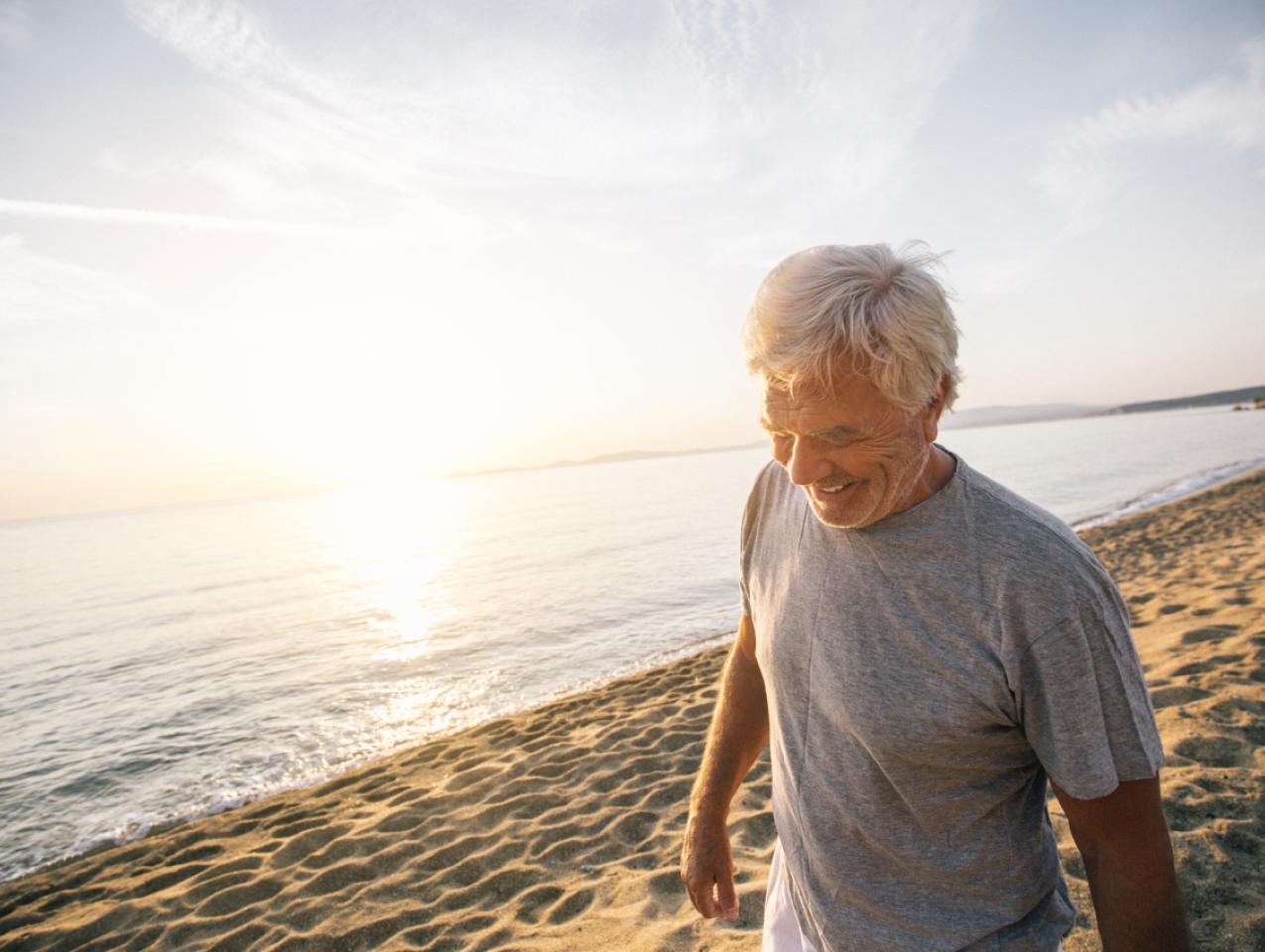- Politics, Institutions, and Public Opinion
- State & Local
- California
A less discussed aspect of the life and legacy of the late John Madden: how the football/broadcasting/video-game legend ended up in California in the first place.
As it turns out, Madden’s story is little different from those of countless others whose families migrated to the Golden State during the 20th century in search of opportunity and a better life.
Born in 1936 in Austin, Minnesota (it’s about 40 miles from Rochester and the famed Mayo Clinic), John Madden was loaded into the family car and driven west to California in 1942. An auto mechanic by trade, his father Earl promptly found work at one of the largest Chevrolet dealerships in San Francisco—the pay good enough to buy the family a cozy bungalow in nearby Daly City.
However, the father wasn’t particularly fond of his line of work—and didn’t want to see his son continue in the male-Madden tradition of a life of hard labor (the future coach’s grandfather became a coal miner when he turned 18). So the son was given a long leash to play as much sports as he could—in a schoolyard, an empty lot, and a city park, all within a short walk from the Maddens’ home on Knowles Avenue. It’s during those days that a young John Madden found a passion for football (here’s Madden recounting his early Daly City days).
I wanted to bring up the Madden saga because as we enter a new year in California, look for the question of migration—outbound and inbound—to be a major storyline.
According to the University of California–Berkeley’s California Policy Lab, the number of individuals leaving the Golden State between March 2020 and September 2021 increased by roughly 12%. That’s not exactly breaking news—nor, for that matter, a novel development—as the notion of a “California exodus” has become a media hobby horse for months now (as here, for example, in discussing Elon Musk’s decision to abandon the Golden State for Texas).
It’s the flip side of the coin—a dearth of so-called CalEntrances—that comes as a shocker.
Per the same California Policy Lab findings, migration into California during the pandemic fell by 38%. It’s a downturn experienced by all of the state’s 58 counties—depending on the region, anywhere from 25 to 45%. The downturn was particularly savage in the San Francisco Bay Area as three of its counties, San Francisco, Santa Clara, and San Mateo, each saw their out-of-state entrances fall by roughly 50% (meanwhile, the number of Californians leaving those three counties rose by 34%, 26%, and 15%, respectively).
The report (here, in its entirety) doesn’t offer reasons as to why California’s inbound migration has plummeted. I’d like to offer four possibilities:
Economy. If I were California governor Gavin Newsom and tasked with having to explain why fewer outsiders are choosing California, my first line of defense would be the nature of work in the Golden State—specifically, the tech sector and portable jobs.
This is not a particularly strong defense. Yes, some tech companies have contributed to the California Exodus by allowing their workers to seek greener pastures (Google, for example, developed a tool for employees last summer to see how their salaries might change if they moved elsewhere and then applied to become fully remote workers).
But that doesn’t explain why someone working for Google who might want to live closer to the company’s Bay Area headquarters isn’t doing so.
One possible culprit . . .
Affordability. Let’s say you wanted to “pull a Madden” and move your family from Minnesota to modern-day San Francisco. How much would you need to get by? According to one Bay Area financial expert, living paycheck to paycheck in San Francisco requires an annual salary of at least $300,000. That’s the minimum needed to own a three-bedroom home, take three weeks of vacation a year, and save both for personal retirement and a child’s education.
Two numbers that stood out in that hypothetical: (a) $3,900 a month to cover the mortgage for a $1.5 million, 1,750-square-foot cottage/house (in San Francisco, 64.35% of household income is used toward mortgage payments and property taxes—which sounds dreadful unless one looks south to Los Angeles’s 81.18%); and (b) $250 a month for high-test gasoline (in December, California’s gasoline prices ran about 40% higher than the national average).
In 2020, the cost of living in California was 10.4% higher than the national average—trailing only Hawaii, the District of Columbia, and New Jersey. So part of the inbound decline may be attributable to the inability to make a lateral move, economically, to the Golden State.
Bad Press. Last year, a spend-happy California state government invested $95 million in stimulus funds to ramp up California tourism (that included $20 million to promote culinary tourism—an ironic choice in that the governor’s fondness for haute cuisine helped to trigger last year’s recall election).
The challenge for the Golden State: can seductive advertising stand up against the reality of a California that doesn’t come across as visitor friendly? In this time of smash-and-grab theft across California, such vivid images as a barbed-wire-like fence being erected around the Grove, LA’s upscale open-air shopping complex, or San Francisco’s Union Square looking more like a police-laden combat zone than a holiday shopping mecca send a discouraging message.
Another form of media, pop culture, isn’t doing California any favors either.
Back in the 1960s and 1970s, television sitcoms showed California through the rosiest and cheeriest of sitcom lenses—suburban tranquility in the likes of My Three Sons and The Brady Brunch. Even Gomer Pyle and his fellow Marines coexisted in harmony with Southern California’s civilian population.
That’s not so in today’s California. HBO’s Big Little Lies may whet one’s appetite to visit Monterey, but it also showcases the lives of some very privileged but troubled Californians. The same goes for Netflix’s Dead to Me—at the same time a paean to upscale living in Laguna Beach and a dissection of the rage queens who (fictionally) live there.
Left, Not Right. Before I moved to California, I lived in Northern Virginia (where I also was raised). At the time, it wasn’t unusual for not-so-liberal friends who worked across the Potomac River, in Washington, DC, to live in the Old Dominion. Among the reasons why: lower taxes, better public schools—and a chance to vote in competitive elections (about three-fourths of DC voters are registered Democrats versus less than 50% in California).
There are Republican pockets in California, they just don’t happen to be in most urban or suburban areas beyond the Central Valley and Inland Empire. If you live closer to the coast and within proximity to one of California’s major populations, good luck finding a local politician who doesn’t lean left of center.
And you can forget about statewide elections: other than Arnold Schwarzenegger, all of one Republican candidate has won a California statewide race in this century (that would be former state insurance commissioner Steve Poizner, victorious in 2006 but a loser in 2018 when he ran for the same office as an independent).
One other consideration: California’s COVID policy. Let’s suppose you suffer from “COVID fatigue”—not an actual malady, mind you, just a weariness from masking, fearmongering, and dictates from public health officials.
Last week, San Francisco and other Bay Area communities expanded mask requirements to gyms, offices, and other indoor settings previously exempt (California is one of a handful of states and territories with mask mandates for the unvaccinated).
That’s not the case in Florida, which added 211,305 more residents from July 2020 to July 2021, according to estimates released by the US Census Bureau (a 1% change in population).
This too will be a storyline in 2022: California’s and Florida’s differing approaches to the pandemic and constant jousting between the states’ two high-profile governors, both of whom are up for re-election in November (for Newsom, who’s struggled to find a foil since Donald Trump left office, Florida governor Ron DeSantis is a favorite piñata).
But one thing neither governor is likely to discuss: procreation (the state’s, not their own).
California’s birth rate has been in decline for years now (especially among women in their 20s, as the average age at first marriage for women in California now surpasses 30). While Florida’s population grew by 1% during the pandemic stretch, the Sunshine State recorded more deaths (255,553) than births (210,305). This hasn’t been the case in Texas, which enjoyed a surging birthrate over the past decade (babies accounting for nearly half of Texas’s new arrivals) while the nation experienced a decline.
Add this to Newsom’s to-do list in 2022, and something of a mixed message if the pro-choice governor chooses to put the Golden State front and center in the national debate over abortion rights (Newsom suggested California could become an abortion “sanctuary” if Roe v. Wade is struck down)—while showcasing reproduction rights, also coaxing his fellow Californians into making more babies.
So much for government staying out of the bedroom.
















